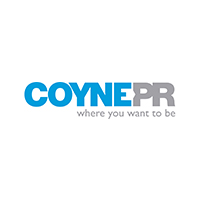This insight post is a summary of the original blog post authored by Linda Berstein Jasper, senior vice president of Coyne PR. View the original post:Higher Education has an Image Problem. Can Communications Help?
COVID-19 has laid bare issues for colleges and universities that have been bubbling at the surface for years, but the last six months have caused a complete overflow.
Higher education is particularly taxed, given the multitude of issues they’re facing simultaneously and the number of disparate audiences they must appease. The need for communications has been nothing short of relentless.
The pandemic and the havoc it has wreaked on higher education—combined with confronting rightful calls for more campus diversity and equity at all levels—are the most pressing issues. But, pile on a zeitgeist questioning the value of a college education to begin with—well, now you’ve got university communications leaders who aren’t getting much sleep at night.
From a communications’ perspective, they’re being tasked with holding down the fort at universities, while still undertaking efforts to appeal to prospective students, which is like putting out a fire on the second floor of your house while having an open house on the first floor.
As the account director for Coyne PR’s higher education practice, Linda Berstein Jasper offers insights and tips to help colleges and universities get through these times.
People Are Calling BS on Colleges
With college classes going predominately online in response to the current situation, it’s understandable that parents and students don’t want to pay the same tuition. Learning via laptop is not ideal and it’s hard to justify the cost, as you’re not just paying for classes — you’re paying for the experience, which includes in-person classes.
On the other hand, colleges have assumed substantial costs simply to remain operational during the pandemic. These institutions are not benefiting financially by going online and, at the end of the day, if your kid’s college goes under, that’s a problem.
Rather than discussing whether colleges’ current operational practices are right or wrong, Bernstein Jasper is more concerned with how they’re communicating about those practices. As communicators, it’s our job to anticipate and detail the consequences of how colleges’ decisions will be received once communicated internally and externally.
Here are Bernstein Jasper’s four tips for higher ed institutions:
Don’t let great get in the way of good
Daily crisis in higher ed require daily communications. To be fast and efficient, you need to learn to get out of your own way so your communication is still relevant by the time it’s posted.
To get the remaining three tips, read Higher Education has an Image Problem. Can Communications Help? You can also get Insights on Higher Education from other Worldcom Partners.
Founded in 1991, Coyne PR has grown to become one of the Top 20 Independent PR Firms in the United States with a reputation for hard work and a solid dedication to client service. Their integrated approach and capabilities to effectively convey messages across earned, shared, paid and owned media for their clients have garnered more than 1,000 industry awards. Their client roster includes many of the most respected companies in the world, such as Hard Rock International, Shell Oil, Fiat Chrysler Automobiles (FCA), Pfizer, VTech and Beam Suntory, to name a few.




